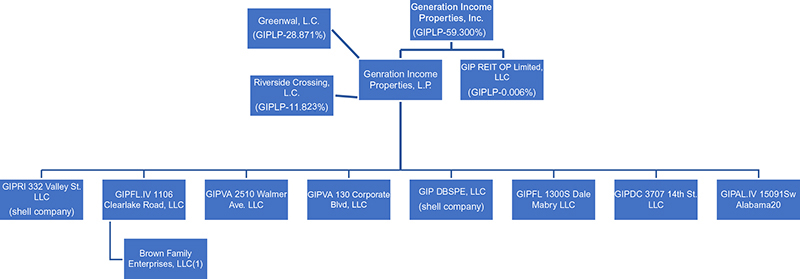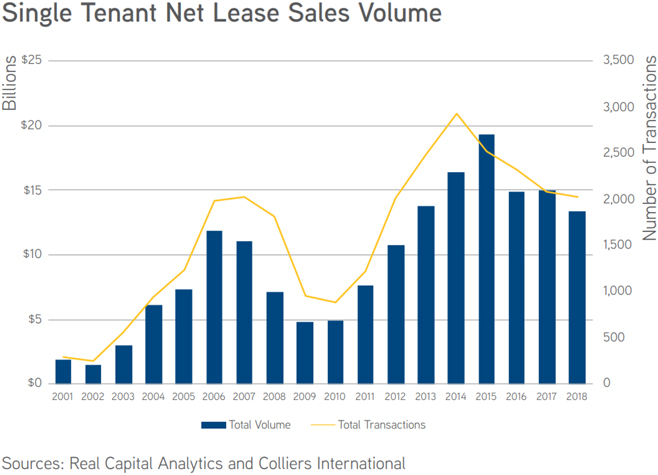The information in this prospectus is not complete and may be changed. We may not sell these shares of common stock until the registration statement filed with the Securities and Exchange Commission becomes effective. This prospectus is not an offer to sell these shares of common stock and it is not soliciting an offer to buy these shares of common stock in any jurisdiction where the offer or sale thereof is not permitted.
SUBJECT TO COMPLETION, DATED JULY 20, 2020
PRELIMINARY PROSPECTUS

GENERATION INCOME PROPERTIES, INC.
$
UP TO SHARES OF COMMON STOCK
$ PER SHARE
We are an internally managed Maryland corporation focused on acquiring and investing primarily in freestanding, single-tenant commercial properties net leased to investment grade tenants. We intend to elect and qualify to be taxed as a real estate investment trust (“REIT”) for federal income tax purposes commencing with our taxable year ending December 31, 2020.
We are offering up to shares of our common stock, par value $0.01 per share, at an offering price of $ per share, for up to $ in gross proceeds in a firm commitment underwritten public offering by Maxim Group LLC, the underwriter. We have granted the underwriter a period of 45 days to purchase up to an additional shares of common stock, which the underwriter may only exercise to cover over-allotments made in connection with this offering.
Our common stock is currently approved to be quoted on the OTCQB Venture Market under the symbol “GIPR”. We have applied to list our common stock on the Nasdaq Capital Market under the symbol “GIPR”. No assurance can be given that our application will be approved. If our application is not approved or we otherwise determine that we will not be able to secure the listing of our common stock on the Nasdaq, we will not complete this offering.
Investing in our common stock involves risks. You should carefully read and consider the “Risk Factors” beginning on page 10 of this prospectus before investing, including:
| • | We have not generated any profit to date and have incurred losses since our inception. There is no guarantee that we will be successful in the operation of the company moving forward and your entire investment could be lost. |
| • | Adverse impacts of the coronavirus on our tenants or the economy in general. |
| • | Our president faces conflicts of interest, as he is our President and Chairman of the Board and owns and serves as the managing member of 3 Properties, LLC, a real estate investment broker firm that we engage with from time to time. |
| • | We currently have five employees and will rely on our management and other paid outside consultants to help manage our business and assets. |
| • | You will not have the opportunity to evaluate our investments before we make them. Our portfolio consists of six investments, and our success is totally dependent on our ability to make additional investments consistent with our investment goals and manage our current and future investments. |
| • | Our senior management team has limited experience managing a publicly traded REIT. |
| • | In the course of preparing our consolidated financial statements for 2019, we identified an error on our December 31, 2018 balance sheet resulting in $2.2 million of minority interest that should have been classified as redeemable minority interest. This error was the result of having a limited number of financial staff and resulted in a material weakness in our internal control over financial reporting. There can be no guarantee that additional material weaknesses do not exist. |
| • | The stock ownership limit imposed by the Internal Revenue Code of 1986 (the “Code”) for REITs and our charter may inhibit market activity in our stock and may restrict our business combination opportunities. |
| • | We have paid, and may pay in the future, distributions from sources other than cash flow from operations, including, without limitation, the sale of assets, borrowings or offering proceeds. |
| • | If our application to list our shares on Nasdaq is not approved, we will not complete this offering. |
| • | Investors participating in this offering will incur immediate and substantial dilution. |
| • | There are material income tax risks associated with this offering because we are not currently a REIT. Although it is our intention to qualify as a REIT, qualifying as a REIT involves highly technical and complex provisions of the Code, and our failure to qualify as a REIT or remain qualified as a REIT would subject us to U.S. federal income tax and applicable state and local taxes, which would reduce the cash available for distribution to our stockholders. |
We qualify as an “emerging growth company” as defined in the Jumpstart Our Business Startups Act and will be subject to reduced public company reporting requirements. See “Jumpstart Our Business Startups Act” contained herein.
Neither the Securities and Exchange Commission nor any state securities commission has approved or disapproved of these securities, determined if this prospectus is truthful or complete or passed on or endorsed the merits of this offering. Any representation to the contrary is a criminal offense.
| Price to Public | Underwriting Discount and Commissions(1) |
Proceeds to Us, before expenses(2)(3) |
||||||||||
| Per Share: |
$ | $ | $ | |||||||||
| Total: |
$ | $ | $ | |||||||||
| (1) | As of the date hereof, an affiliate of the underwriter holds 61,193 shares of our common stock, which were issued as compensation for advisory services unrelated to this offering. See “Underwriting” for details regarding the compensation payable to the underwriter in connection with this offering. |
| (2) | We expect that the amount of expenses of the offering that we will pay will be approximately $250,000. |
| (3) | We have granted the underwriter an option for a period of 45 days to purchase up to an additional shares of common stock. If the underwriter exercises this option in full, the additional underwriting discounts and commissions payable by us will be $ and the total proceeds to us, before expenses, will be $ . |
Maxim Group LLC
The date of this prospectus is , 2020.


